No, headphones can’t dent your skull since they don’t apply enough pressure. Learn what is actually causing your head dent and if it’s concerning or not.
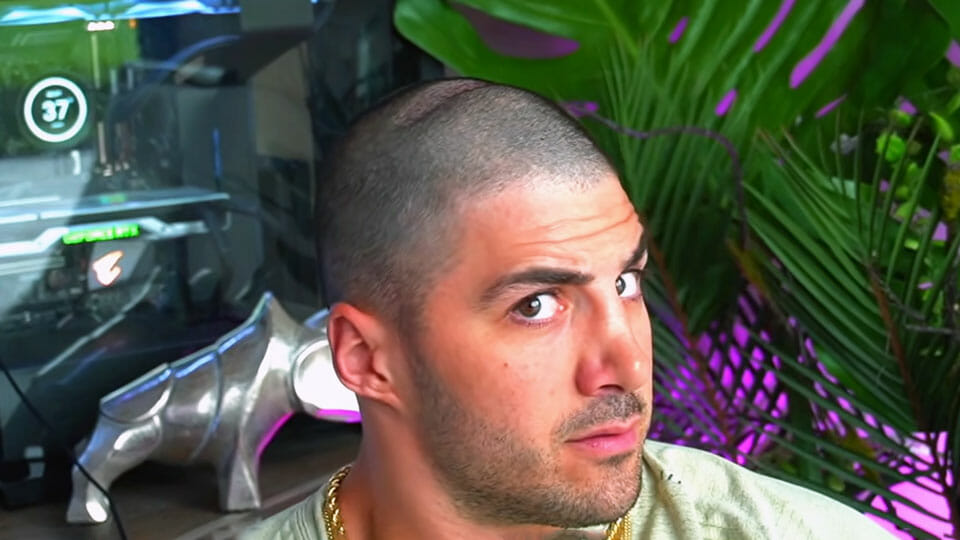
Can Headphones Dent Your Skull?
Headphones alone can’t dent your skull as they don’t apply enough force.
How much pressure is needed to fracture a skull?
Human bones are rock solid but slightly flexible. Because of that and the shape of a human skull, a lot of pressure is required to cause a bone fracture.
- A study published in the Journal of Neurosurgery suggests first fractures appear at a load of around 298 pounds (or 135 kilograms).
- However, according to studies from the Faculty of Engineering and the Department of Neurosurgery of Tokyo University, the average is around 520 lbs (236 kg) or 570 pounds (258 kg).
Therefore, it’s safe to conclude that regular headphones can’t cause any harmful alteration to your skull.
Here’s more on headphone safety.
Can headphones slowly cause head deformation?
Some of you might be worried that extended headphone use could eventually change the shape of your skull.
Thankfully, that isn’t possible either. Mainly because headphones don’t apply nearly enough pressure to do so (as they would be incredibly uncomfortable to wear). And because the adult skull doesn’t grow anymore.
- When speaking about artificial cranial deformation, the latter was performed by tightly binding a skull of a month-old baby when the cranium (skull) grows faster and is, therefore, more susceptible to reshaping when applying pressure.
- There is also non-artificial cranial deformation. But again, it only occurs in infants when their brains are growing, and the bones search for space to expand.
Common Causes of Headphone Dents
If you see a dent on the top of your skull after wearing headphones, don’t panic. There are a few reasons for that.
Headphone Hair
Hairs naturally grow upwards, but the longer they get, the more they start bending and falling down at their tips. That creates a layer of air between the end of your hair and your scalp.
The headphones’ headband applies pressure on your hair. Add sweat and grease from your skin, and they flatten and stick together.
Because you only apply pressure on a small portion of your skull, it appears as a head dent.
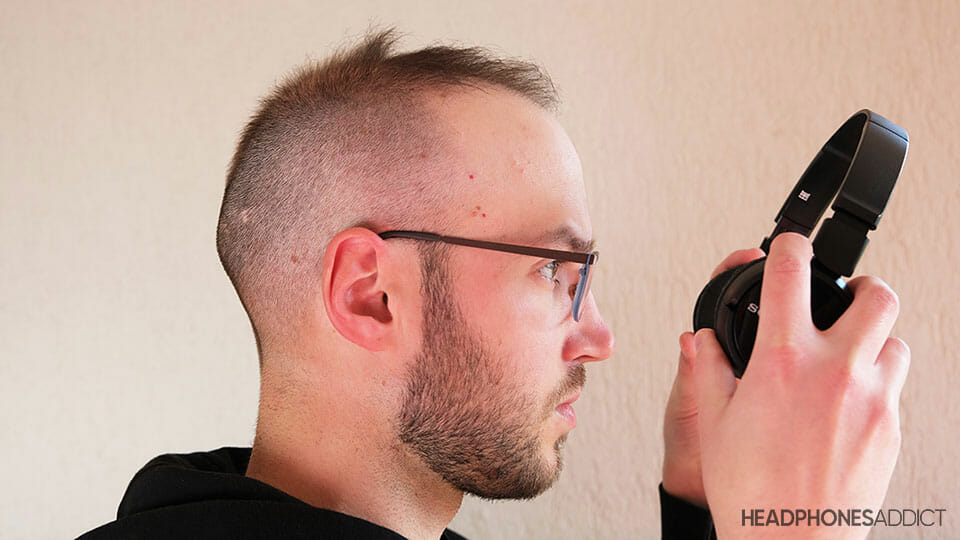
The same hair dent happens when you wear a helmet, a hat, or a beanie. It’s purely aesthetic and nothing to be concerned about.
Extended use of headband headphones
Even if you don’t have hair and see skin dents after prolonged headphone use, you don’t have to panic.
There’s a layer of tissue and fat between your skin and bone. The more the headband pushes on top of your skull, the more it compresses and displaces the tissue.
While it looks scary, that indentation will go away after some time.
People with glasses have similar indentations around their noses and ears. Even pillow marks on your face after a nap are a sort of indentation. And you know they go away.
Related: How to wear headphones with glasses
How to Get Rid of Headphone Dents on Your Head?
Your head dent will eventually return to its natural shape. However, how fast it happens depends on the type of headphone indentation.
If you need to get rid of the headphone dent immediately, this is what you have to do.
Shower your head and wet your hair
As mentioned above, hair gets squished and sticks together with the help of sweat and grease from your skin. So waiting for hair to go back might not work.
Therefore, the best way to fix dent is to:
- Wet your hair with water and dry them off with a towel
- Use shampoo to wash off the sweat and grease thoroughly
Combing your hair could also work, but not to the same extent as washing them.

Massage the dented area
It has been proven that massage has an anti-inflammatory effect. It stretches and pulls the muscles and skin and helps with blood circulation.
Headband pressing on your skin reduces circulation, so the fastest way to get rid of that headset dent is to:
- Massage the area around the dentation. That will speed up the blood flow and help the indented part return to its natural position faster.
- Massage your head while taking a warm shower to speed up the process.
Take regular pauses from wearing headphones
The best curative is prevention. Take regular pauses to avoid deep indentations that would take a long time to flatten up.
- Try to reposition a headband every half an hour or so. That way, headphones won’t constantly be pressuring only in one spot.
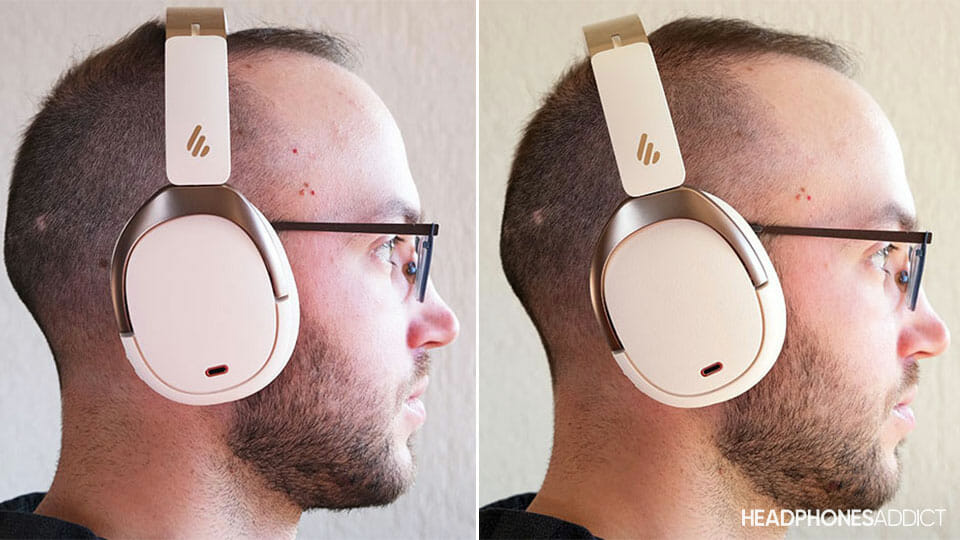
- Take headphones off your head every hour or so. And take a short walk, maybe just to refill your cup. That will minimize the headphone dent and improve your overall body health (studies advise a 5-minute walk after half an hour of sitting).
Can Wearing Headphones Affect Your Ear Shape?
No, wearing headphones can’t affect your ear shape. Any visual changes to your ear lobes that you might see will go away after a shorter break.
Consider this: if headphones could change the shape of your ears, sleeping on your sides would do the same.
Studies suggest that a human ear fully develops at the age of 7-8, with some minor “ear maturation” up to the age of 13.
Meaning that headphones can’t change the shape of your ears, no matter how hard they clamp.
Why does one ear protrude more than the other after wearing headphones?
One ear protrudes more than the other after wearing headphones because your headphones don’t apply pressure evenly.
- Make sure to extend the headband on both sides equally.
- Keep the center of the headband in the center of your head.
What Do Dents on Your Skull Mean?
If you followed all possible suggestions and the dent doesn’t go away even after a few days, it could mean it was there before. You have just noticed it now.
Small skull deformations are expected and not concerning. Bones aren’t perfectly smooth, so you might feel some small bumps here and there.

However, if you believe the dent on your head is new, consult a doctor.
Congenital skull indentation
Congenital depression occurs in newborns and babies due to uneven skull expansion.
It sometimes happens in the uterus, but its most commonly caused by using aggressive methods and tools during a child’s delivery.
Your parents could tell you more about that if that’s the case.
Previous brain surgery
Another cause of a dent in your skull is a pre-existing medical condition or a brain surgery you might have had.
In the surgery called craniectomy, the surgent removes a piece of the skull to relieve the pressure on your brain due to excessive blood build-up.
That usually happens after a severe head injury that causes blood vessels to pop and spill blood.
The piece of bone is later returned to its place, but you probably still feel under your fingers where the surgent made the cut.
Trauma
Severe trauma (a hit in your head) can also cause a dent in your skull. That kind of dent (or depressed fracture) is hard to ignore since it’s usually excruciating and accompanied by symptoms such as:
- Nausea
- Dizziness
- Confusion
- Headache
- Vision issues
- Balance issues
Any skull fracture, especially a depressed one, requires immediate medical attention to avoid long-lasting brain injuries.

Paget’s disease of the bone
Paget’s disease causes your bones to become more brittle during a “recycling” process, which can cause strange bone shapes.
All cells, even the ones in bones, are constantly replaced by new ones. Paget’s disease interferes with this process, causing bones to grow abnormally and become more fragile.
When it comes to the skull, the disease primarily causes headaches and hearing loss since it interferes with nerves in your inner ear.
Bone cancer (or tumor)
Osteomas are the most common example of a benign skull deformity or tumor. It causes skull lesions, a new outgrown bone that previously wasn’t there.
Lesions can range from small “pimples” to longer “ridges”. You can surgically remove such tumors.
On the other hand, bone marrow cancers like multiple myeloma can also cause lesions and dents due to abnormal bone growth.
Gorham’s disease
Gorham’s disease, also known as a “vanishing bone disease”, essentially causes a bone to disappear in a particular area. It’s extremely rare, but if it occurs, it’s usually on a skull.
How to Adjust Your Tight and Uncomfortable Headphones
If, despite taking breaks, your headphones constantly cause a dent on top of your head, you might have heavy headphones or overly tight clamping force.
Here’s what you can do to make your headphones more comfortable.
Increase headband padding
If your headphones are too heavy, a headband is too narrow, or not well padded; you should add more padding.
- The simplest solution is to wrap some foam under the headband.

- You can also find universal headband paddings on Amazon.
Of course, that won’t solve the headphone hair (it might actually make it worse), but at least you won’t have to deal with the skin indentation.
Wear a headphone headband at the back instead of on top of your head
The indentation won’t be as noticeable by moving a headphone band towards the back of your head.
To avoid getting an indentation in the first place:
- Slightly change the position of the headband while wearing headphones. The skin won’t have time to compress and form a dent.
Adjust the clamping force (too-tight headphones, too-loose headphones)
First, ensure to properly extend the headband adjustments so that the headband doesn’t press on top of your head. Also, avoid forcing earcups down your ears.
- Extend the headband to the point where you barely feel it. Most extensions are long enough to fit even giant heads.
Loosen the clamping force
On the other hand, if you feel like your headphones are squeezing your ears too much despite having thick padding, try to loosen the clamping force.
- Take your headphones are stretch them over a smaller box or a pile of books wider than your head.
- Give them at least a full day before trying them out again. They should feel looser. If not, repeat the process, and give another small book in between.
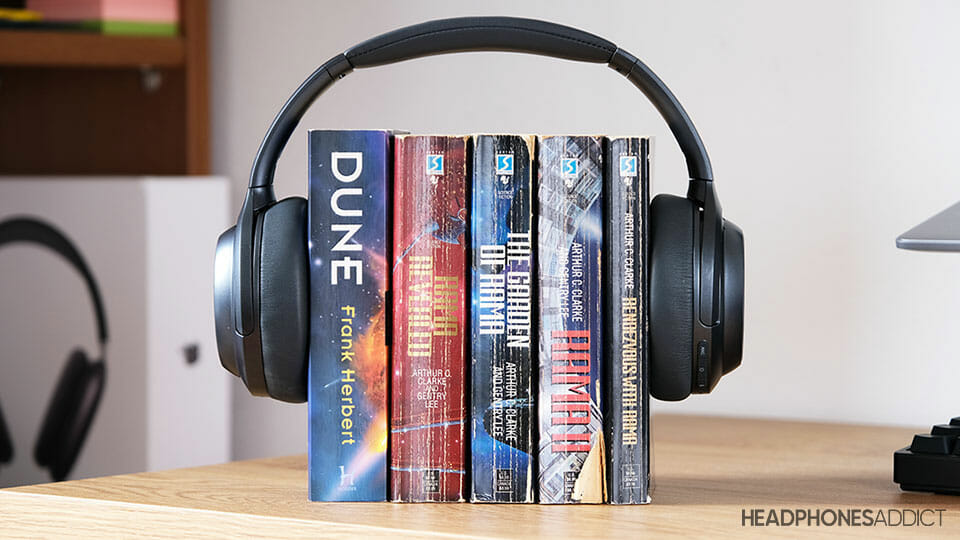
Of course, overly loose headphones aren’t good either, as they don’t seal enough to get a full sound, and they constantly fall off your head.
Moreover, the entire weight falls to the top of your head if not distributed equally, which increases the chance of getting a headphone dent.
Tighten the clamping force
- Tie a string on top of the ear cups or squish them between two items. The goal is to reshape the aluminum inside a headband to create a tighter grip.
- Give headphones are least a full day before trying them again.
But don’t overdo it since you can crack or snap the plastic.
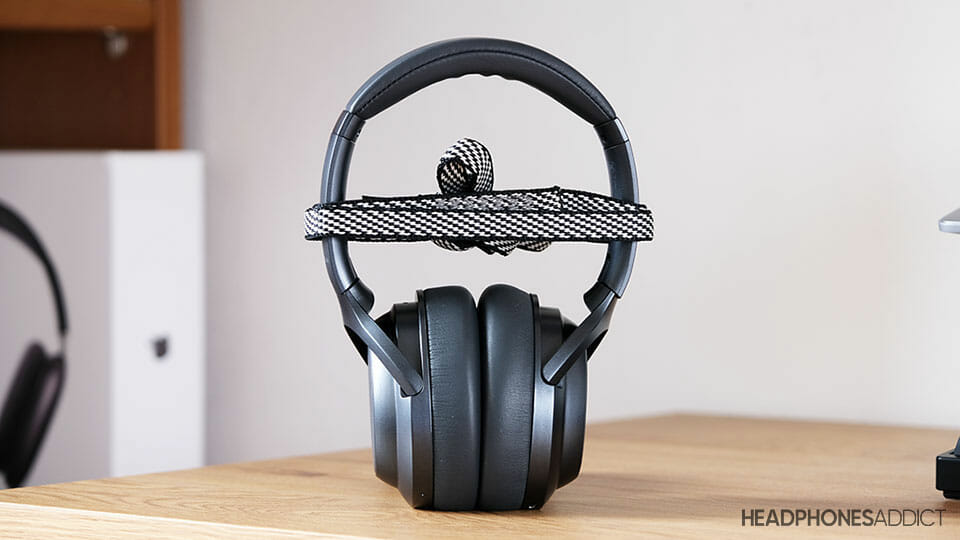
Wear a cap or beanie under the headphones
This trick only works if you can extend the headband to compensate for a bigger head due to a beanie.
And while this approach will relieve some of the pressure off your head, it isn’t the most optimal:
- Earpads already prevent ears from breathing, making them hot and sweaty, which will get worse with a beanie
- Covering your ears with fabric will reduce sound quality
- Since your head is now “bigger,” your headphones will clamp your ears stronger
Here’s more advice on preventing headphones and earbuds from causing pain.
Frequently Asked Questions (FAQ)
Can you get a dent in your head from headphones?
Yes, you can get a temporary dent in your head from headphones. It’s caused by headphones pressuring against your skin and denting it. The skin will return to its regular shape after an hour or so.
Can headphones change the shape of your head permanently?
No, headphones aren’t strong enough to change the shape of your head permanently. Any changes you see after wearing headphones are temporary and should return to normal after a while.
Conclusion
Hopefully, you now understand why headphones “dent your head” and why you shouldn’t worry about that. And if you have to go out and you have a dent on top of your head, remember:
- Wash your head with some warm water and gently massage the scalp.
- Make sure to take regular breaks and avoid using uncomfortable headphones.
The best place to start is choosing one of the most comfortable headphones or earbuds on the market.

From a childhood fascination with sound, Peter’s passion has evolved into a relentless pursuit of the finest headphones. He’s an audio expert with over 5 years of experience in testing both audiophile and consumer-grade headphones. Quote: “After many years, I can confidently tell which headphones are good and which are terrible.” Find his honest opinion in his reviews.



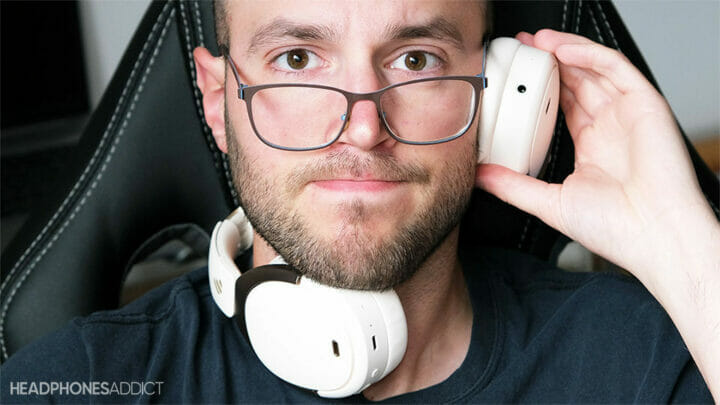
6 Comments
M SAAD
I was researching about headphone today and came across your website – great collection of high-quality articles.
Matija Ferjan
Thanks! 😀
sava
Hi I have a headset indent on the top of my head and after I saw the big indent I stopped using my headset so It can get back to normal but it’s been around 2 weeks since I have stopped using them and the indent doesn’t seem to be getting smaller I am very concerned that it won’t go away and my older brother keeps telling me that it will stay there forever so I’m scared to tell my parents in fear of them yelling at me and taking my computer and phone away it might be noteworthy to add that I am 14 and I have been using my headset around 10h a day every day for about 2 years I am sorry for how long this was but I am very concerned and I wanted to add as much detail as possible.
Matija Ferjan
Thanks for your comment Sava.
If the indent appeared suddenly, then it’s probably due to something else.
While wearing a headset for 10h per day when you’re 14 and your bones are still growing might impact the head shape. It wouldn’t do so quickly but it would take months.
Jarred Rupert
My headphones are nearly falling off my head around every hour to an hour and a half, does this actually have an impact on an “dent” forming in my hair?
Matija Ferjan
The headphones can “dent” your hair by curving it to look like a dent. You can fix that by washing your hair or combing. And as we have found out in the article, it doesn’t change the shape of your head.